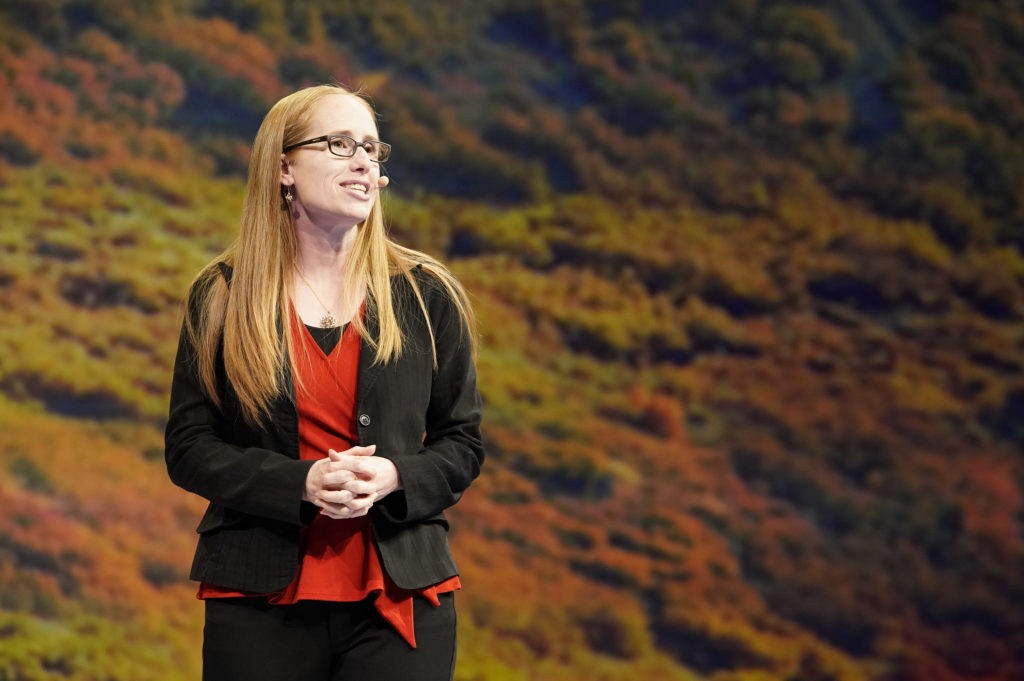
BYU professor Jamie Jensen discussed the “unnecessary battle” that has been raging between science and faith throughout all of history and said they should work together for truth.
In her devotional speech Nov. 3, the biology professor said students should seek to find knowledge and truth through the symbiotic pathways of faith and science.
Jensen firmly stated, “science is agnostic.” She explained that while science cannot prove God is real, it also cannot prove God is not real. Because of this, she said, no one can make a conclusion on the reality of God through science alone. There must also be faith-filled conclusions made.
She highlighted the importance of not believing in a “God of the gaps,” which means when something is unknown, God is used to justify the explanation. Jensen said this can be dangerous when science evolves and the unknowns explained by God can now be explained by science. This can cause faith to disappear or people to doubt.
A shift needs to occur where belief in God is not to justify the unknowns of the universe, she said. A belief in God is “not because He can explain the gaps in your current understanding, but because He gives you spiritual understanding, and you have felt His presence in your life,” she said.
Truth and the miracles of God can be found through the gathering of spiritual and scientific data, she said.
She recounted a story where in graduate school, a professor asked her how intellectual people could believe in God when there is no evidence to support the existence of God. He argued it is possible to test that belief and the evidence clearly shows there is no God. She responded and said it is not possible to test the God hypothesis through scientific means, but she is also not one to accept ideas without evidence.
So Jensen sought a way to test for spiritual evidence in her life. The evidence she found over the years came from personal spiritual experiences that she cannot share with others in a way that will make it evidence to them. She performed spiritual “tests” like the one given in Moroni 10 of the Book of Mormon, where Moroni asks all to inquire of the Lord if the book is true.
Just like in the scientific world, she created a test, made a hypothesis, gathered data and made a conclusion based on evidence. She explained this process of finding truth to her professor and how she found her own evidence that God is real and the Book of Mormon is true.
The professor refuted that her evidence cannot be replicated, which is a key factor to scientific results being accepted as true.
Jensen said she wishes she would have told her professor, “This test is absolutely, 100% repeatable and everyone can receive the spiritual evidence if they choose to develop the spiritual tools necessary to detect that evidence.”

Using both spiritual and scientific modes of seeking truth, Jensen said it will be possible to “dissolve the artificial wedge we have driven between science and faith.”
She also quoted President Russell M. Nelson’s address while dedicating the Life Sciences Building on campus. “There is no conflict between science and religion. Conflict only arises from an incomplete knowledge of either science or religion, or both.”
Spiritual evidence will look different to every person, but Jensen said combining that evidence with scientific evidence will produce many miracles in seeing God’s hand in life.
Describing the many medical trials she had while giving birth, Jensen said “miracle came about through the angels who work in medicine and the healing of my soul through much prayer and supplication.”
She said she is grateful she has both science and faith at work in her life because it took both to bring to pass her miracle.
Even with the evidence gathered from both pathways, Jensen spoke about the importance of uncertainty.
“We must become more comfortable with uncertainty,” she said, because it leads to the seeking of new knowledge, both scientific and spiritual.
She said she hopes everyone can move forward seeking spiritual and scientific evidence to help them learn truth, with no contradiction between them. Science and faith work together in harmony, and using both symbiotic pathways of learning can lead to a greater understanding of the Atonement and God’s presence in His children’s lives.




